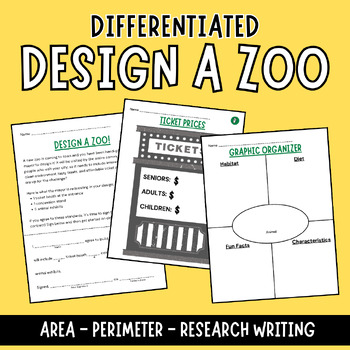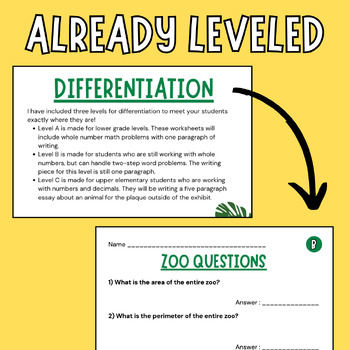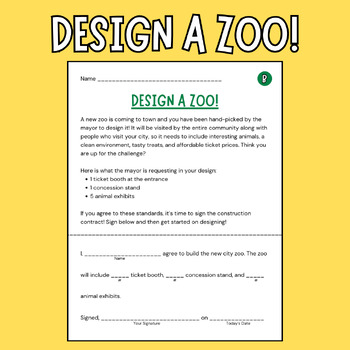Design a Zoo DIFFERENTIATED PBL Resource - Area/Perimeter & Research Writing
- PDF
Description
Area, perimeter, word problems, and research writing - oh my! This one-stop resource includes everything you need for all learners. With 3 different levels already being differentiated for you, this is an easy print and fun project all in one for you!
This resource invites students to mix creativity with math and writing to launch a new zoo in their town! From the very beginning, they design the layout on a grid paper before answering questions about area and perimeter, choosing ticket and concession prices, answering word problems about sales, researching an animal they selected to be in their zoo, and finally, writing a plaque to go outside of its exhibit.
This resource can be used for 3rd graders all the way to 6th grade with the differentiation! The word problems and numbers get harder as you move through the levels, so challenge your students or use this as a wrap-up for the standards! Either way, this is bound to be a hit!





